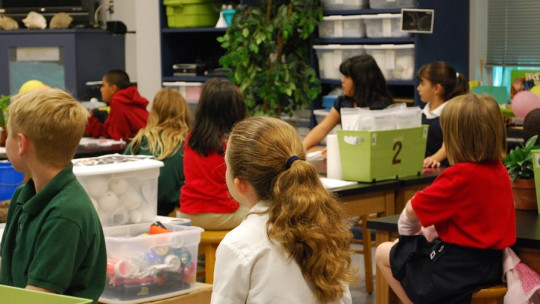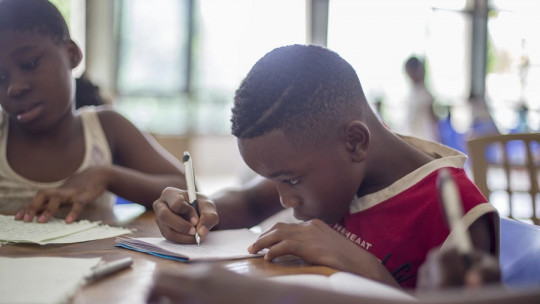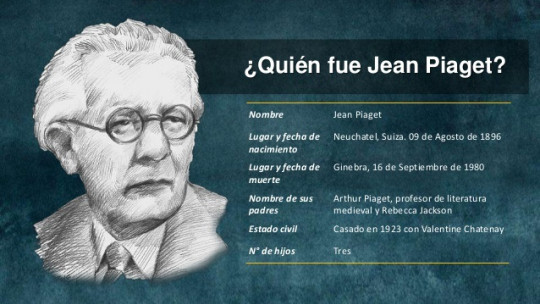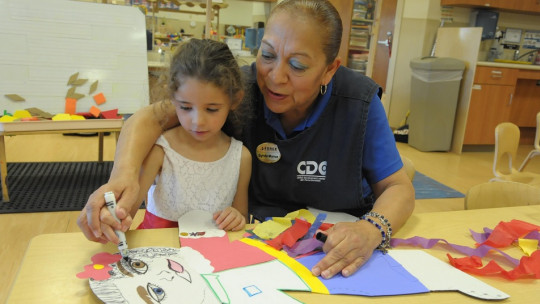
Learning is a very complex process, whose theoretical definition has been the subject of debate during the last century.
For this reason, it is not surprising to see that psychology and related sciences, such as educational sciences, have not agreed on defining what learning is and how it occurs.
There are many theories of learning, all of them with their advantages and disadvantages. Next we are going to look at them in more depth, knowing their definition of what learning is and getting to know some of its greatest representatives.
How many learning theories are there?
In psychology there are many theoretical currents, a fact which has repercussions on sciences with which it is closely related, such as educational sciences For this reason, it is not surprising that, when it comes to addressing what learning is and how it occurs, many psychologists and psychopedagogues have proposed various theories, each with its followers and detractors.
Although we have all experienced what learning is, trying to define it is not an easy task. It is a concept that is difficult to define, which can be interpreted in very different ways and the history of psychology itself is a demonstration of this. However, broadly speaking we can understand that learning is all changes, both behavioral and mental, resulting from experience differing quite a bit from person to person depending on their own characteristics and the situation.
There are as many learning theories as there are ways to see it. It is difficult to give an exact number of how many theories there are, given that even within the same current two authors can differ on how learning occurs and what it is. Likewise, what we can say is that its scientific study emerged at the beginning of the 20th century and that, since then, efforts have been made to provide an answer to how this important process in education occurs.
Learning theories, summarized and explained
Below we will see the main learning theories proposed from the beginning of the last century to the current moment.
1. Behaviorism
Behaviorism is one of the oldest psychological trends, having its origins at the beginning of the 20th century. The fundamental idea of this current is that learning consists of a change in behavior, caused by the acquisition, reinforcement and application of associations between environmental stimuli and the observable responses of the individual.
Behaviorism wanted to demonstrate that psychology was a true science, focusing on the purely observable aspects of behavior and experimenting with strictly controlled variables.
Thus, the most radical behaviorists assumed that mental processes are not necessarily what cause observable behaviors. Within this approach, Burrhus Frederic Skinner, Edward Thorndike, Edward C. Tolman and John B. Watson stand out.
Thorndike proposed that a response to a stimulus is reinforced when this phenomenon is followed by a positive effect of reward, and that a response to a stimulus will become stronger through exercise and repetition.
The figure of Skinner is very important in behaviorism, being one of its greatest representatives with his operant conditioning. In his opinion, rewarding correct actions of behavior reinforces them and encourages their recurrence. Therefore, reinforcers regulate the appearance of desired behaviors.
We have another of the references of behaviorism in the figure of Iván Pávlov This Russian physiologist is famous for his experiments with dogs, providing great influences on behaviorism in general.
We must thank Pavlov for his approaches to classical conditioning, according to which learning occurs when two stimuli are simultaneously associated, one, the conditioned, and the other, the unconditioned. The unconditioned stimulus provokes a natural response in the body and the conditioned one begins to trigger it when it is linked to it.
Taking his experiments as an example, Pavlov showed his dogs the food (unconditioned stimulus) and rang the bell (conditioned stimulus). After several attempts, the dogs related the sound of the bell to the food, which caused them to emit saliva in response to this stimulus, like the one they did when they saw food.
2. Cognitive psychology
Cognitive psychology has its origins in the late 1950s. Under this current, people are no longer seen as mere recipients of stimuli and senders of directly observable responses, as behaviorists had understood.
For cognitive psychology, Human beings act as information processors Thus, cognitive psychologists have special interest in the study of complex mental phenomena, which had been largely ignored by behaviorists, who came to affirm that thought could not be considered behavior.
The appearance of this trend in the 1950s is not coincidental, since it was around then that the first computers began to appear. These computers had military purposes, and were far from the potential they have now, but they gave rise to thinking that human beings could be compared to these devices, as we process information. The computer became an analogue of the human mind.
In cognitive psychology, learning is understood as the acquisition of knowledge That is, the student is an information processor who absorbs content, carrying out cognitive operations during the process and storing it in his memory.
3. Constructivism
Constructivism emerged between the 1970s and 1980s, as a response to the vision of cognitive psychology. Unlike this current, constructivists did not see students as simple passive recipients of information, but rather as active subjects in the process of acquiring new knowledge. People learn by interacting with the environment and reorganizing our mental structures.
Learners are seen as those responsible for interpreting and making sense of new knowledge, and not simply as individuals who store, in a purely memoristic way, the information received. Constructivism implied a change in mentality, going from treating learning as the mere acquisition of knowledge to the metaphor of construction-knowledge.
Although this movement matured in the seventies, there were already a few precedents for constructivist ideas. Jean Piaget and Jerome Bruner anticipated the constructivist vision several decades ago, in the 1930s.
Piaget’s learning theory
Piaget developed his theory from a purely constructivist position. This Swiss epistemologist and biologist stated that boys and girls have an active role when it comes to learning.
For him, the different mental structures are modified and combined through experiences, through adaptation to the environment and the organization of our mind.
Learning occurs as a result of changes and novel situations Our perception of the world is renewed as we grow. This process is made up of schemes that we mentally order.
Adaptation takes place through a process of assimilation, which modifies external reality, and another of accommodation, which changes our mental structures.
For example, if we discover that our friend has a dog and we have had a previous bad experience with these animals, such as being bitten or barked, we will think that the animal is going to hurt us (assimilation).
However, when we see that he approaches us and makes a gesture as if he wants us to caress his belly, we are forced to change our previous classification (accommodation) and recognize that there are dogs that are nicer than others.
Ausubel’s theory of meaningful learning
David Ausubel is also one of the greatest exponents of constructivism, receiving many influences from Piaget. He believed that for people to learn it is necessary to act on their prior knowledge.
For example, if a teacher wants to explain what mammals are, they must first take into account what their students know about what dogs, cats or any animal that is within this class of animals are, in addition to knowing what they think about them. .
So that Ausubel had a theory very focused on practice Meaningful learning contrasts with purely rote learning, such as retaining long lists without discussion. The idea of producing much more lasting knowledge, which is internalized more deeply, is defended.
4. Bandura’s social learning
Social learning theory was proposed by Albert Bandura in 1977. This theory suggests that people learn in a social context and that learning is facilitated through concepts such as modeling, observational learning, and imitation.
It is in this theory that Bandura proposes reciprocal determinism, which maintains that behavior, the environment and individual characteristics of the person influence each other. In her development she also stated that children learn by observing others, as well as from the behavior of the model, which are processes that involve attention, retention, reproduction and motivation.
5. Social constructivism
At the end of the 20th century, the constructivist vision changed even more due to the increase in the perspective of situated cognition and learning which emphasized the role of context and social interaction.
Criticism against the constructivist approach and cognitive psychology became stronger with the pioneering work of Lev Vygotsky as well as research conducted in the anthropology and ethnography of Rogoff and Lave.
The essence of this criticism is that constructivism and cognitive psychology observe cognition and learning as processes “trapped” within the mind, in isolation from the environment, considering it self-sufficient and independent of the contexts in which it is found.
Social constructivism emerged in response to this criticism, defending the idea that cognition and learning should be understood as interactions between the individual and a situation where knowledge is considered situated that is, a product of the activity, the context and the culture in which it is formed.
6. Experiential learning
Experiential learning theories are based on social and constructivist theories of learning, but placing experience as the center of the learning process. Your goal is understand how experiences motivate students and promote their learning
In this way, learning is seen as a set of significant experiences, occurring in everyday life, that lead to a change in the individual’s knowledge and behavior.
The most influential author of this perspective is Carl Rogers who suggested that experiential learning is that which occurs on one’s own initiative, and with which people have a natural inclination to learn, in addition to promoting a complete attitude of involvement in the learning process.
Rogers defended the view that learning should be facilitated Students cannot be threatened with punishments since, in this way, they become more rigid and impermeable to new knowledge. Learning is more likely to occur and last longer when it occurs on one’s own initiative.
7. Multiple intelligences
Howard Gardner developed the theory of multiple intelligences in 1983, in which argues that the understanding of intelligence is not dominated by a single general ability Gardner states that each person’s general level of intelligence is made up of numerous different intelligences.
Although his work is considered very innovative and, today, there are many psychologists who defend this model, it should be said that his work is also considered speculative.
Even so, Gardner’s theory is appreciated by educational psychologists, who have found in it a broader vision of their conceptual framework.
8. Situated learning and community of practice
The theory of situated learning and community of practice developed by Jean Lave and Etienne Wenger It collects many ideas from the learning theories of various psychological trends
The theory of situated learning highlights the relational and negotiated nature of knowledge and learning, the nature of which arises from an action of commitment to knowledge, which occurs most effectively within communities, regardless of their type.
The interactions that take place within a community of practice are various, such as cooperation, problem solving, understanding and social relationships. These interactions contribute to social capital and the acquisition of knowledge within the community itself, depending on the context.
Thomas Sergiovanni reinforces the idea that the learning process is more effective when it occurs in communities, stating that academic and social results will improve only when classrooms go from being mere places to which students have to go to true communities. of teaching and learning.
9. 21st century learning and skills
Nowadays we know that learning theoretical and practical knowledge must go beyond what is in books. Immersion in new technologies and social and creative capabilities is essential in a world that is constantly changing. One of the references of this trend is the Association for 21st Century Skills (P21) or Partnership for 21st Century Skills
Among the skills valued today, in addition to mastering new technologies, are critical thinking, improving interpersonal skills and self-directed learning, among many others.
It is not only knowing data or being critical of it, but it is also the acquisition of skills that are useful so that the student, once he or she is an adult, can function as a citizen with the ability to think. Is make you aware of what your environmental footprint is, how you can improve humanity, be creative or how to function as a good neighbor and parent








